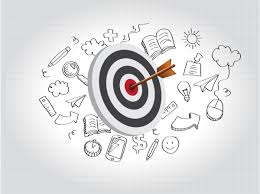Physical practical1/ST/Tic2024/Gouri Amel
مخطط الموضوع
-

- The Practical Work Of Physics 1
-
Faculty: Science And Technology - University of Msila
- Department: BASE COMMON ST
- Target audience : 1st Year license sciences and technology
- ·Credit=2
- Coefficient=1
- Dr. GOURI Amel
- Hourly volume : 24 h in each semesters Hourly: Wednesday 08:00-17:00, Thursday 08:00-12:00 , Lab 02
- Contact: By email: gouri.amel@univ-msila.dz
-

-
 AT the end of these practical works you will be able to:
AT the end of these practical works you will be able to:
- Recall the definition associated with the physical sciences.
- Explain various physical phenomena
- Apply various concepts related to the sciences
- Analyze the consistency of the solution obtained with the physical problem posed
- Surrounding the student with the practical work of physics.
- The student can distinguish between systematic errors and random errors
- The student is can value conclusions ,and derived based on experimental results-
المحادثة
-
الإفادة
-
حزمة سكورم
-
-
- Used the international standards in physical measurements.
- A general understanding of physical errors.
- Comprehending the forces that affect the object and their representation.
- Applying Newton's second law.
- The difference between free fall and actual fall.
- Deriving the solution for a second-order differential equation.
- An overview of physical collisions.
-
المحادثة
-
منتدى
-
حزمة سكورم
-

Q1:What main estimation of the inaccuracy in physical measurements?
Q2:Choose the correct answer"The Mean Value (x) "It is:- the sum of the errors
- the Mean of the errors
- the absolute value function inequalities involving variables
Q3:An error may be defined as:
- the difference between the measured value and real value
- the real value measured
Q4:In an elastic collision:
- The total energy of the system changes
- The total energy of the system remains constant
- Rotational motion converts to linear motion.
Q5:In an inelastic collision:
- Objects retain their entire kinetic energy.
- The total energy is converted entirely into kinetic energy.
- Objects remain in a state of complete rest.
- Objects change shape and lose energy during the collision.
Q6:In an inelastic collision:
- The system conserves momentum.
- The total energy converts to internal energy.
- Objects retain their original shape.
- The total energy converts to kinetic energy.
-
المحادثة
-
الملف
-

The Objectives is:
- Analyzed the measurement errors during experiments and physical measurements
-Apply statistical methods to estimate measurement errors
-Evaluate the results of experiments and physical measurements -
The experiment consists of verifying Newton’s second law by measuring gravity and acceleration
-
المحادثة
-
Experiment to study the effect of gravity on the motion of
falling objects without external influences such as air or
friction. The experiment involves dropping an object from
a given height and measuring the time it takes to reach the
ground-
الملف
-
المحادثة
-
منتدى
-
الإفادة
-
-
The objective of this practical work is to verify the conservation of momentum and kinetic
energy by measuring the velocities of the object before and after the collision-
منتدى
-
المحادثة
-
رابط إلكتروني
-

-
The successful student would thus be ready to move on to the next level.
-
الملف
-
الإفادة
-
المحادثة
-
-

-
الإفادة
-
المحادثة
-
-

Bibliography
- Wolbeck, J. ( 2010) . Instantaneous Velocity Using Photogate Timers. The Physics Teacher, 48(4), pp.262-263
- Serway, R. A. and Jewett, J. W. ( 2013) . Physics for Scientists and Engineers with Modern Physics. 9th ed. Brooks Cole, pp.257-458
- Lana Sheridan “Mechanics Collisions”Nov 8, 2018.- J.-L FAVRE, «Les différents types d'erreurs et leur prise en compte dans les calculs géotechniques » . École centrale de Paris 92295 Chàtenay Malabry
- Bevington, Philip R., and D. Keith Robinson Data Reduction and Error Analysis for the Physical Sciences, 3rd edition, McGraw-Hill, New York, 2003.
- Barford, N. C., Experimental Measurements: Precision, Error and Truth, Addison-Wesley publishing Company, Inc., Reading, Massachusetts, 1967Web bibliography
-https://www.univ-chlef.dz/ft/wp-content/uploads/2020/10/Chapitre-2.pdf
- Labviewmakerhub. com. ( 2017) . LINX [ LabVIEW MakerHub] . [ online] Available at: http://www.
- labviewmakerhub.com/doku.php?id=libraries:linx:start [Accessed 3 Mar. 2017]
